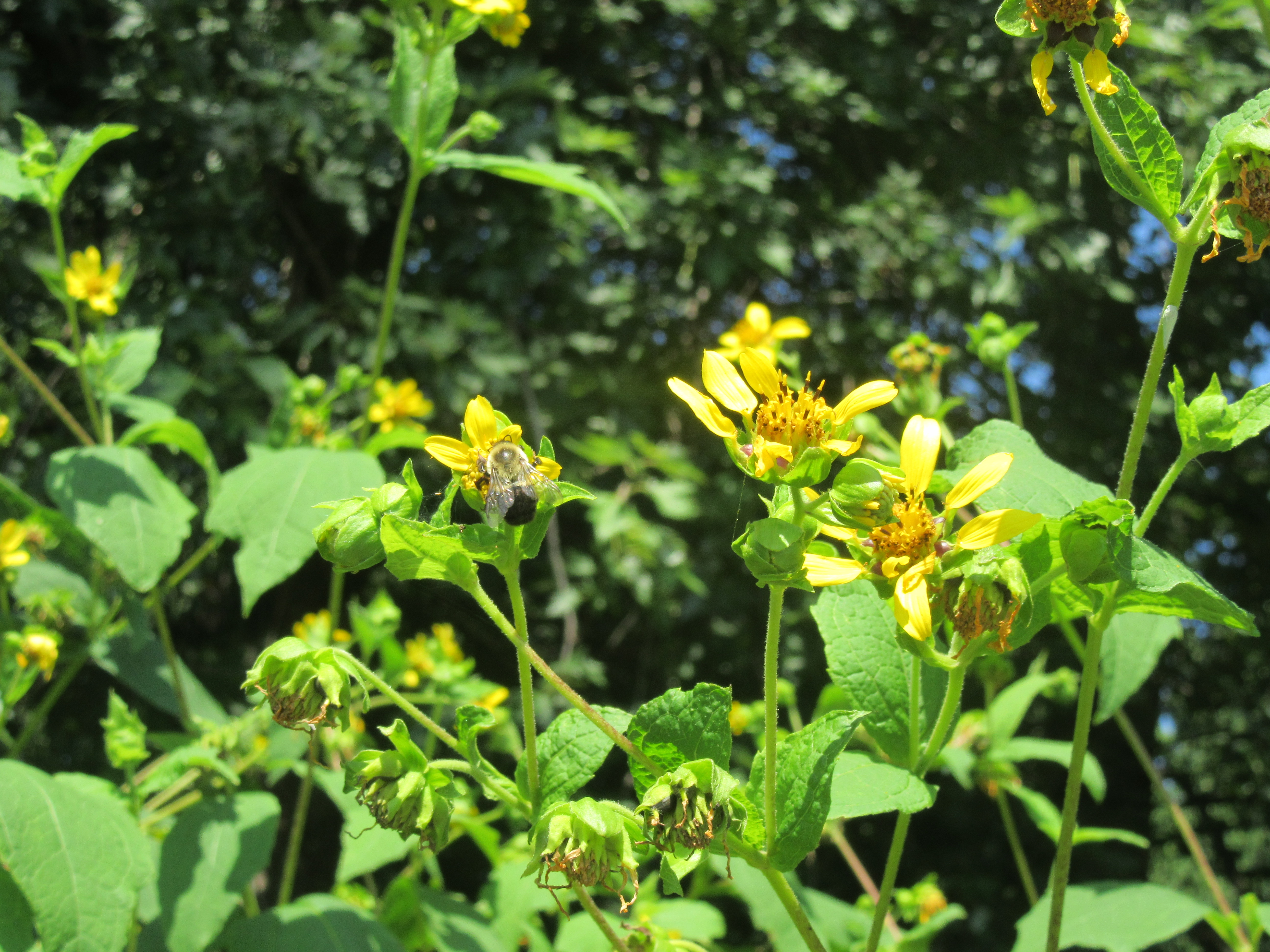Thursday, August 24, 2023
In late summer and early fall, clusters of berries in vibrant hues, from aqua to pink to purple, dangle prominently from porcelain berry vines. But beware! Porcelain berry is a highly invasive deciduous vine that grows rapidly and smothers everything within reach. Each berry can have two to four seeds which birds and other wildlife eat and disperse in their droppings.
Two Saturdays a month in all weather, most recently on Aug. 19, Friends of Dyke Marsh (FODM) volunteers tackle invasive plants, like porcelain berry, English ivy, mile-a-minute, stiltgrass, garlic mustard and bush honeysuckle in the Dyke Marsh Wildlife Preserve, a unit of the George Washington Memorial Parkway. Around 20 percent of the parkway’s plants are not native, maintains the National Park Service (NPS), like the ubiquitous ivy climbing up trees.
Invasives’ Harm
Invasive plants are introduced species not native to an area and likely to cause environmental and economic harm. They lack the natural controls of their native ranges so they can spread rapidly. They can displace native plants, compete with natives for soil, water, nutrients and light and form monocultures.
University of Delaware entomologist Douglas Tallamy explains in his book, Bringing Nature Home, “When a plant is transported to an area of the world that contains plants, animals and diseases with which it has never before interacted, the coevolutionary constraints that kept it in check at home are gone, as are the ecological links that made that plant a contributing member of its ecosystem.”
Parkway Superintendent Charles Cuvelier says, "Invasive plants pose a threat to the biodiversity of Dyke Marsh. Through targeted treatments and community involvement, we are making significant progress in our efforts to control these species and promote native plants. As stewards of Dyke Marsh, we recognize the importance of managing invasive plants. By working together with our partners and volunteers, we can ensure the long-term health and sustainability of this valuable ecosystem."
Planting Native Plants
In 2018 and 2023, in partnership with NPS, FODMers cleared three areas overrun with invasive plants and planted around 4,100 native trees and plants. It appears that around 80 percent of the plants and trees are surviving.
Native plants are those that occur naturally in an area. “Plants and animals evolve together to create unique natural communities, weaving a complex web of interrelationships,” according to the Virginia Department of Conservation and Recreation. A balanced and healthy ecosystem depends on the interactions of species. “When you try to pick out anything by itself, we find it hitched to everything else in the universe,” wrote conservationist John Muir.
Native plants that produce nectar, pollen and seeds are food for native birds, butterflies, bees and other wildlife. Many insects, like butterflies, depend on specific plants, called “host plants,” with which they co-evolved for their food and shelter. Monarch butterflies, for example, lay their eggs on milkweed; spicebush butterflies, on spicebushes.
Native plants support the native wildlife with which the plants coevolved. For example, Dr. Desiree Narango, a University of Massachusetts ecologist, explained to attendees at a FODM meeting that native plants support a higher abundance and biomass of caterpillars than non-native plants. She said that a chickadee with four to seven young, needs between 390 to 570 caterpillars every day to feed their young. Arlington naturalist Alonso Abugattas put it this way in the latest Bay Journal: “It takes 9,120 caterpillars to raise a brood of three young chickadees.” Caterpillars are very dependent on certain host plants.
What should people plant? Check out Plant NOVA Natives at https://www.plantnovanatives.org/. Abugattas calls oak trees the “grand champion native tree … with more than 600 species of animals and insects relying on oaks to survive.” He also recommends black cherry, serviceberry, dogwoods, elderberry and goldenrods. He notes that many birds eat seeds and berries, but he says, in choosing plants, “Consider planting native flora that bring insects to the table.”
The National Audubon Society’s website points out that lawns, monocultures of typically non-native grasses, cover over 40 million U.S. acres and support minimal functioning ecosystems.
“By choosing native plants for your landscaping, you are not only helping wildlife, but you are creating a healthier place for yourself, your family and your community,” says Audubon.
More Information
Friends of Dyke Marsh, www.fodm.org
National Park Service, www.nps.gov/gwmp
Northern Virginia’s native plants, www.plantnovanative.org and the Virginia Native Plant Society at www.vnps.org
“Plant Invaders of Mid-Atlantic Natural Areas” at https://www.invasive.org/alien/pubs/midatlantic/midatlantic.pdf
